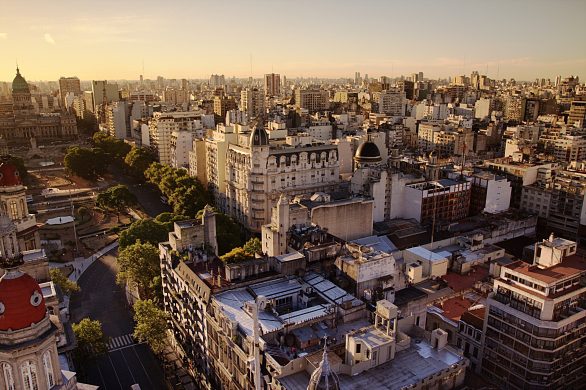Det fremgår af en artikel på hjemmesiden for tænketanken Americas Society/Council of the Americas:
Porteños get another chance to brag about their hometown. Once again, Buenos Aires topped the list of Latin America and the Caribbean’s most livable cities, per the Economist Intelligence Unit’s 2016 Global Livability Ranking, released last week.
The Argentine capital made the top half of the index, followed by Santiago, Chile; San Juan, Puerto Rico; Montevideo, Uruguay; and San José, Costa Rica. The ranking evaluates 140 cities around the world, assessing which offer the best living conditions when it comes to safety, healthcare, culture and environment, education, and infrastructure.
Australia and Canada hold six of the survey’s top 10 positions, with Melbourne topping the list for the sixth year in a row.
Buenos Aires ranks high. Here’s why.
For many, there’s little surprise about the top Latin American spot going to Buenos Aires, given its high marks for its extensive cultural offerings like beautiful architecture and world-class museums.
In terms of environmental concerns, the City of Buenos Aires undertook major efforts to combat climate change and was recognized with a C40 & Siemens City Climate Leadership Award in 2013 for its sustainable mobility plan, as well as in 2014 for its waste management strategy.
|
|
Education has also played a vital role when it comes to the city’s regional ranking. In fact, Argentina holds one of the highest literacy rates of the region, at 98 percent.
Five years ago, under the leadership of Esteban Bullrich—who then oversaw the city’s education policy and is now the Argentine education minister—Buenos Aires went through a comprehensive educational reform with the goal of ensuring students’ success through the improvement of teachers, administrators, and the city ministry’s performance, all while engaging families and communities throughout the process.
Challenges for cities and global livability
On a global level, threats of terror and civil unrest hurt cities scores across the board in the latest report, with only six out of 140 cities improving their results over the past year.
Latin America is no exception, and cities in the region failed to break into the survey’s top 60. In general, the region’s cities benefit from a relatively good performance in cultural and environmental indicators, and some successes in education.
But the stability indicator, which considers levels of delinquency and crime, brings down Latin America’s rankings. Crime-plagued Caracas is considered Latin America’s least livable city, holding spot 123 overall, and it stands among the ten global cities that have experienced the biggest declines in livability over the past five years.
The best-performing cities tend to be in relatively wealthy countries and have low population densities, providing good quality infrastructure and low crime levels. But business hubs like New York and Paris can often see their rankings harmed, since they tend to attract an influx of residents who overwhelm infrastructure, security, and transit systems.
That, in turn, leads to congestion and environmental degradation, problems that are familiar to major Latin American hubs like Rio de Janeiro (90) and Mexico City, which ranked between 102 and 106 in the 2015 survey. (The EIU does not release full current-year report rankings.)















